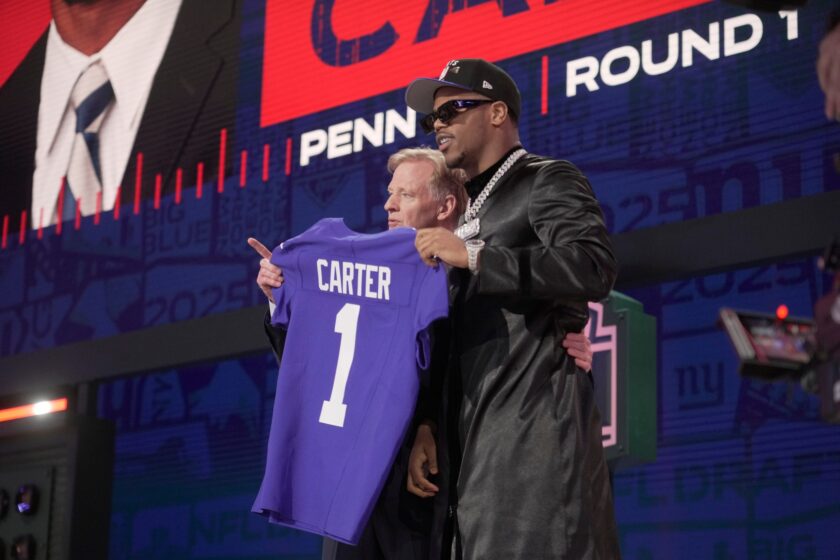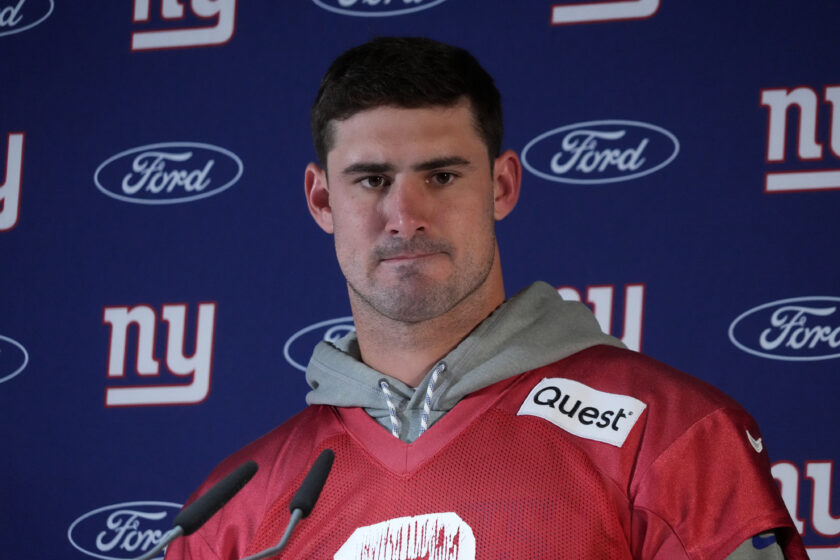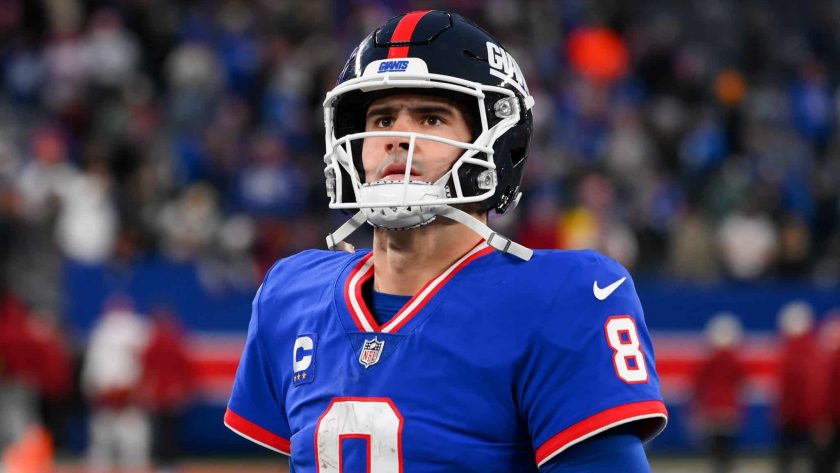New York Giants: Eli Manning is not to blame for this pathetic offense (Film Room)
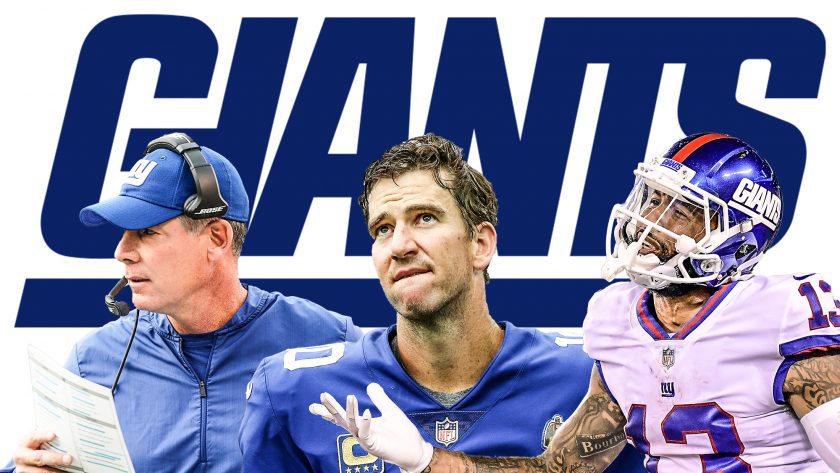
New York Giants quarterback Eli Manning may have lost a notch on his fastball, but is nowhere near the issue pertaining to this pathetic offense.
[sc name=”Robby Sabo Banner” ]Only once did the Philadelphia Eagles blitz Eli Manning and the New York Giants passing attack. Just once. Think about that.
Yes, there were a few run blitzes tossed into the mix to offset a few specific run situations, but Jim Schwartz’s group literally rushed four on every passing play and continued to create madness in the pocket.
Do you understand what this means? Can you even begin to fathom the consequences for an offense that can’t even block a four-man pass rush on a routine basis? It’s mind-blowing. Slinging Sammy Baugh couldn’t find success against such odds. For an offense, it’s the NBA equivalent of attempting to score points with a point guard whose left arm is tied behind his back.
But forget about Slinging Sammy for a moment. New York’s two-time winning Super Bowl champion is under siege—especially after his performance in his team’s most recent defeat at the hands of the champs.
No matter who you might speak with, either Eli Manning sucks or an Eli Manning apologist continues to live in the past.
It’s silly. It’s wrong. It’s completely incorrect.
While Eli Manning has surely lost a level on his fastball, this man can surely still play the game. He is not the reason for this offense’s struggles thus far in 2018 and we have the film work to prove it. We will literally go through every passing play en route to the answer.
[sc name=”Giants Center” ]***The Giants ran 60 offensive plays in total in which 43 were of the passing variety. Excluding screen passes, we’ll dive into every one.
Once done viewing the game film, there are three big-time issues with the offense that don’t concern No. 10.
- The offensive line is terrible and doesn’t allow anything to happen.
- The scheme is extremely conservative from the pocket.
- Nobody, including Odell Beckham Jr., is getting open.
- 1st-and-10: 8-yard completion to Cody Lattimer on the smoke route vs. 2-deep (Pressure).
- 2nd-and-2: Interception looking for Rhett Ellison on the inside curl vs. single-high.
There’s no question about the first drive. This one was all on Eli. He simply cannot throw a pick in this spot. It literally spots the opposition at least three points to begin the game.
What most individuals are missing is that Manning didn’t have much of a chance the rest of the way.
[sc name=”Giants Title” text=”Drive Number 2 Starting at Own 25-Yard Line” ]
- 1st-and-10: 4-yard rush by Saquon Barkley off left tackle vs. 2-deep.
- 2nd-and-6: 7-yard completion to Barkley on HB option vs. 2-deep.
- 1st-and-10: 46-yard rush by Barkley between the tackle vs. single-high.
- 1st-and-10: 3-yard rush by Wayne Gallman off right tackle vs. single-high.
- 2nd-and-7: Incomplete pass intended for Sterling Shepard on the short drag vs. single-high.
- 3rd-and-7: Incomplete pass intended for Shepard on the corner vs. 2-deep.
Look at drive No. 2. The offensive line did its job (for the most part) and Eli Manning put the ball in the perfect spot in the end zone. If Shepard hadn’t fallen down (in getting his feet tangled up with the corner), the Giants would have had themselves a score.
- 1st-and-10: 8-yard loss on sack of Manning on standard 5-to-7 step drop vs. single-high (Pressure).
- 2nd-and-18: 3-yard gain by Barkley between the tackles vs. single-high.
- 3rd-and-15: 12-yard completion to Odell Beckham Jr. on WR screen vs. at-the-sticks.
What would you want Eli Manning to do on this drive? To get it kick-started, Nate Solder decides to get his quarterback blown up on the first play.
After a measly three-yard gain, look at the Eagles defense on 3rd-and-15. Did anybody say, “Playing the sticks?” Sorry, but no quarterback is throwing for the sticks in this situation.
Eli Manning faces this situation more than any QB in the NFL:

- 1st-and-10: No gain on rush by Barkley off left tackle vs. single-high.
- 2nd-and-10: Offsides by the defense.
- 2nd-and-5: Incomplete pass to Beckham on the fade vs. single-high (Pressure).
- 3rd-and-5: Incomplete pass to Shepard on the dig vs. 2-deep.
The 2nd-and-five that fell well short of Beckham Jr. drew many laughs on social media. It’s wrong to laugh here.
Manning actually gets hit on the play, causing the short duck. Furthermore, what Beckham does on the route is also a head-scratcher. Why does he slow down?
The 3rd-and-5 is all on Manning. This was Philly’s sole blitz against a Giants pass all night long and New York’s max protect scheme surprisingly picked it up.
Not only did Manning miss Shepard, but he missed Lattimer deep as well.
[sc name=”Giants Title” text=”Drive Number 5, Starting at Own 22-Yard Line” ]- 1st-and-10: 9-yard rush by Barkley between the tackles vs. single-high.
- 2nd-and-1: 6-yard rush by Barkley between the tackles vs. single-high.
- 1st-and-10: No gain rush by Gallman between the tackles vs. single-high (illegal block in the back by Shepard).
- 1st-and-20: No gain on completion to Beckham on WR screen vs. 2-deep.
- 2nd-and-20: 5-yard completion to Beckham on smoke route vs. 2-deep.
- 3rd-and-15: 7-yard completion to Barkley on RB sit vs. at-the-sticks.
The 2nd-and-20 play is when head coach Pat Shurmur showcased visible frustration regarding Eli Manning not throwing the ball downfield.
What’s important to remember is this: Shurmur called a designed WR screen to OBJ on 1st-and-20. It netted no yards. On 2nd-and-20, Manning is simply looking at the defense while trying to pick up 8-10 yards for a more manageable 3rd-down.
Of course, it fails horribly and on 3rd-and-long, the Eagles go to their ridiculous “playing the sticks” defense. Manning throwing to Barkley here is absolutely justified.
Do you see what’s happening here? Manning is taking the odds of releasing the ball quickly as he knows that’s the better play in moving the ball down the field rather than holding on to it and finding himself pressured with the horrid O-line via protection.
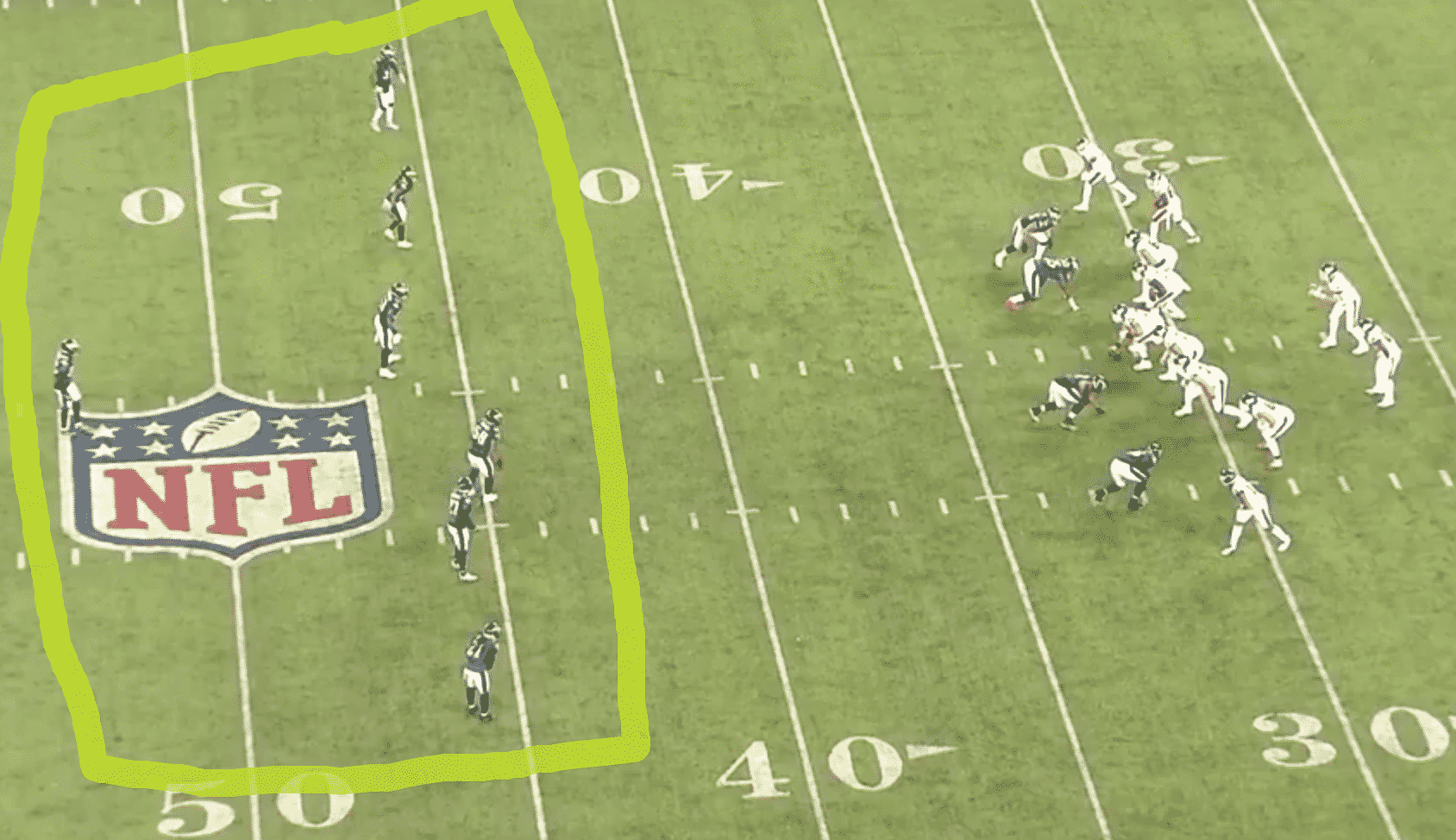
- 1st-and-10: Incomplete pass to Barkley on the RB sit vs. 2-deep (Pressure).
- 2nd-and-10: 55-yard completion to Barkley on RB screen vs. 2-deep.
- 1st-and-10: False start on the offense.
- 1st-and-15: Incomplete pass to Gallman on the sprint-out vs. single-high (Pressure).
- 2nd-and-15: Incomplete pass to Gallman on RB out vs. 2-deep (Pressure).
- 3rd-and-15: 9-yard completion to Barkley on the RB screen vs. 2-deep (Pressure, Roughing the Passer).
- 1st-and-Goal: 1-yard rush by Barkley between the tackles vs. goalline.
- 2nd-and-Goal: Incomplete pass to Shepard on the comeback vs. goalline (Pressure).
- 3rd-and-Goal: Incomplete pass to Scott Simonson in the flat vs. goalline (Pressure).
The sheer amount of pressure that comes Manning’s way is beyond comprehension. To even begin to blame the quarterback after seeing this sort of pressure is unfathomable.
The O-line can’t even run a screen the right way. Manning somehow gets it off the Barkley on the ultra-conservative playcall (not Manning’s fault), but a roughing the passer bails them out.
Down near the goalline, it’s even more apparent that nobody on the offense is getting open. The stale switch/rub route between Scott Simonson and Beckham on the left side on 3rd-down was laughably predictable and easily defended.
And, oh yeah, Manning, on 2nd-down, is harassed immediately. It’s amazing he even got the ball out to Shepard on the comeback.
[sc name=”Giants Title” text=”Drive Number 7, Starting at Own 25-Yard Line” ]- 1st-and-10: Incomplete pass to Beckham on the fade vs. single-high.
- 2nd-and-10: No gain on rush by Barkley between the tackles vs. 2-deep.
- 3rd-and-10: 6-yard loss on sack of Manning on 5-to-7 step drop vs. 2-deep (Pressure).
Again, this line simply can’t even handle a conventional four-man pass rush. Johnny Unitas wouldn’t have a shot behind this group.
[sc name=”Giants Title” text=”Drive Number 8, Starting at Own 25-Yard Line” ]- 1st-and-10: 39-yard completion to Lattimer on the post vs. 2-deep.
- 1st-and-10: 2-yard rush by Barkley between the tackles vs. 2-deep.
- 2nd-and-8: Incomplete pass to Lattimer on the go-route vs. 2-deep.
- 3rd-and-8: Incomplete pass to Jawill David on the post vs. 2-deep.
At this point in the game, Manning is just chucking up deep balls for the sake of attempting to stretch the field. It’s not working. This Lattimer overthrow was on purpose. There’s nothing open across the entire field.
Look at Odell Beckham Jr. His man is sticking to him like glue. OBJ has to get open on this deep dig if he wants the ball.
Manning possibly could have had the deep out to the right but it would have taken a perfect throw. Taking a shot on the post considering the one-on-one against the safety is always a good shot. There were only 34 seconds remaining at this point.
[sc name=”Giants Title” text=”Drive Number 9, Starting at Own 44-Yard Line” ]- 1st-and-10: 20-yard completion to Shepard on the WR screen vs. prevent (Halftime).
- 1st-and-10: 11-yard completion to Beckham on the slant vs. single-high.
- 1st-and-10: 1-yard rush by Barkley off right tackle vs. single-high.
- 2nd-and-9: 4-yard completion to Barkley on the RB screen vs. single-high.
- 3rd-and-5: 9-yard completion to Beckham in the flat vs. single-high.
- 1st-and-10: 50-yard TD rush by Barkley off right tackle vs. 2-deep.
Another screen in the mix, this time of the running back variety. Why Shurmur calls so many is obvious yet harmful: he needs the RB and WR screens to substitute for the inconsistent rushing attack yet is calling them against a defense who won’t blitz. It’s the exact opposite type of defense blitzes favor.
Barkley rushed for 130 yards in total on 13 carries. Take out the 50-yard scamper and his rushing night is extraordinarily average. The Giants rushing attack ranks 27th in the NFL with an average of 87.5 on the ground per contest.
[sc name=”Giants Title” text=”Drive Number 11, Starting at Own 27-Yard Line” ]- 1st-and-10: Incomplete to Barkley on RB sit vs. single-high (Pressure).
- 2nd-and-10: 7-yard completion to Shepard on the middle curl vs. 2-deep (Pressure).
- 3rd-and-3: 6-yard completion to Beckham on the smoke route vs. single-high.
- 1st-and-10: Incomplete pass to Davis on the corner vs. 2-deep.
- 2nd-and-10: No gain on completion to Barkley on RB screen vs. 2-deep.
- 3rd-and-10: 7-yard loss on sack of Manning on 5-to-7 step drop vs. 2-deep (Pressure).
What else can you say? Another failed running back screen that goes for a no gain leads to a 3rd-and-long and to another sack.
[sc name=”Giants Title” text=”Drive Number 12, Starting at Own 37-Yard Line” ]- 1st-and-10: 2-yard complete pass to Barkley on the RB sit vs. single-high.
- 2nd-and-8: 7-yard rush by Barkley between the tackles vs. 2-deep.
- 3rd-and-1: 1-yard rush by Barkley between the tackles vs. single-high.
- 1st-and-10: 9-yard complete pass to Barkley on RB sit vs. 2-deep.
- 2nd-and-1: 10-yard complete pass to Shepard on in route vs. 2-deep.
- 1st-and-10: 4-yard rush by Gallman between the tackles vs. 2-deep.
- 2nd-and-6: 7-yard complete pass to Gallman on RB sit vs. 2-deep.
- 1st-and-10: 6-yard loss on sack of Manning on 5-to-7 step drop vs. 2-deep (Pressure).
- 2nd-and-16: Incomplete pass to Gallman on the RB screen vs. 2-deep.
- 3rd-and-16: 18-yard complete pass to Gallman on the RB sit vs. at-the-sticks.
- 1st-and-10: Incomplete pass to Barkley on the RB angle vs. single-high.
- 2nd-and-10: 6-yard complete pass to Barkley in the flat vs. single-high.
- 3rd-and-4: Incomplete pass to Beckham on the drag vs. single-high (Pressure).
- 4th-and-4: Incomplete pass to Beckham on the fade vs. single-high.
There’s not much to be learned at this stage of the game. Manning chipped away on the drive by taking the open underneath stuff the entire way downfield until the offense stalled in the red zone.
Add another sack to the mix.
[sc name=”Giants Title” text=”Drive Number 13, Starting at Own 10-Yard Line” ]- 1st-and-10: 1-yard rush by Gallman between the tackles vs. 2-deep.
- 2nd-and-9: 9-yard rush by Gallman between the tackles vs. 2-deep.
- 1st-and-10: 6-yard complete pass to Beckham on the quick out vs. 2-deep.
- 2nd-and-4: 24-yard completion to Simonson on the seam vs. 2-deep.
As was mentioned in the opening, no, Eli Manning is not the same guy we saw a decade ago. He has lost a little off his fastball. He is slower than the days of scrambling out of a pile to find a miraculous David Tyree in Arizona (believe it or not).
Guess what? Arm strength and quarterback athleticism have never been a huge piece to the NFL puzzle at the position. Philip Rivers, as great as he still is, showcases one of the weakest arms in the league. He’s still nasty.
The final numbers are ugly:
- 60 total offensive plays.
- 43 pass attempts.
- 17 rush attempts.
- 4 sacks.
- 15 hurries.
- 8 screen passes.
This equates to the quarterback dealing with serious pass-rushing pressure 15 times in 35 total tries (43 passes minus eight screen passes). No quarterback will find success with that ratio.
For an individual to blame Manning for the Giants offensive ills is to completely ignore the five-man unit in front of him while picking only specific parts of the game. He made a terrible decision on the interception to open up Philly and then overthrew Shepard on the dig. Besides those two plays, this man had no chance and, in fact, covers up a lot of the O-line’s ills by releasing the ball so quickly.
Make no mistake, he can push the ball just a bit more, but the O-line in terms of protection and rushing paired with a more aggressive attack by Pat Shurmur must comply.
Eli Manning is not the issue for this New York Giants offense and it’s a damn shame the narrative is overwhelmingly shouting the opposite message.
He doesn’t need everything to be perfect around him. He simply needs average (not beyond awful) pass protection.

Robby Sabo is a co-founder, CEO and credentialed New York Jets content creator for Jets X-Factor - Jet X, which includes Sabo's Sessions (in-depth film breakdowns) and Sabo with the Jets. Host: Underdog Jets Podcast with Wayne Chrebet and Sabo Radio. Member: Pro Football Writers of America. Coach: Port Jervis (NY) High School. Washed up strong safety and 400M runner. SEO: XL Media. Founder: Elite Sports NY - ESNY (Sold in 2020). SEO: XL Media.
Email: robby.sabo[at]jetsxfactor.com

